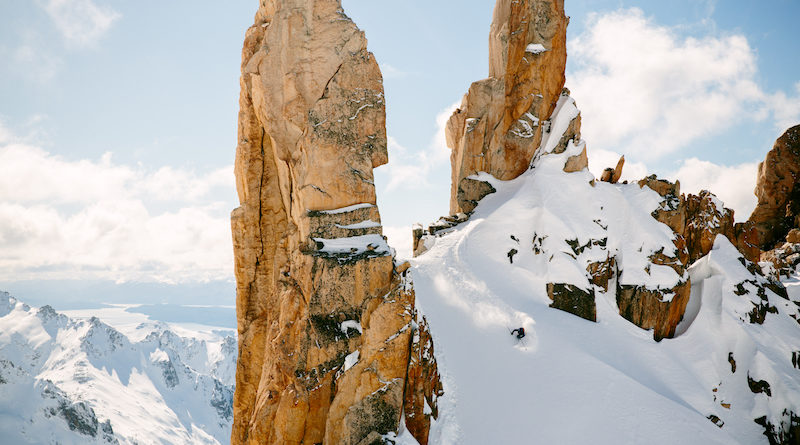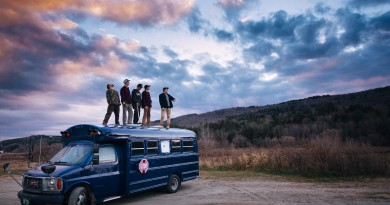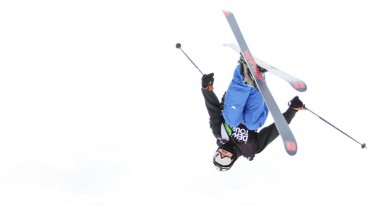Return of the Backcountry Badass
Aaron Rice spent a year skinning and skiing a record 2.5 million feet in the mountains of Utah, California, Argentina and Chile. Then he moved back to Vermont. Here’s why. Featured photo: “Going for 2.5 million vert wasn’t about the uphill, it was about the cool places I could get to, human-powered,” says Rice, shown here etching a turn in Argentina. Photo by Tyler Wilkinson-Ray
Aaron Rice wasn’t expecting the avalanche. On Sunday, March 11, 2018. Rice and three friends set off into the sidecountry, cutting across a ridgeline toward a favorite gully. It had been snowing all week, promising deep powder. At the top of the gully, they paused. “We followed protocol and skied one by one, making a cut across the top of the gully,” Rice said, when we talked a few days later.
“The first skier launched in and set off the slide. He managed to hold his speed and ski out to the side. If he hadn’t, there are 100-foot cliffs below, and the snow would have swept him right over those.” Three days later, just to the west on that ridge, another gully slid. Six Army personnel who had been undergoing winter warfare training in Smuggler’s Notch, Vt., were caught in it. Five of the six were injured and sent to the hospital.
“If we were out West, we would have definitely been carrying avy gear that day,” noted Rice. “Everything I know about this terrain should have told us we were in avalanche conditions but since it’s Vermont, we just didn’t think about it,” he says. After skiing down, he checked that no one else had been caught in the slide and then sat down for a debrief with his group. After, he did something not many skiers do: he admitted to his 8,000-plus followers on Instagram, that he’d made a mistake.
If anyone should know about avalanches, it’s Aaron Rice. At 28, he has skinned and skied more backcountry vertical in a year than anyone has ever recorded, and he’s already been crushed by falling snow. In March 2017, Rice was rappelling down a section of Utah’s Y-Not Couloir when a small slide triggered above. It funneled down the rock face, then brushed him over a 35-foot cliff and 250 feet down the couloir. “I should be dead,” he wrote in his avalanche report.
WHAT 2.5 MILLION FEET REALLY TAKES
When Rice arrived in Vermont from his home in Acton, Mass., ten years ago to attend University of Vermont, he immersed himself in skiing and learning about backcountry terrain. “I’d get up at dawn and go skin up, do some laps and be back for class by 9:30 a.m.,” he remembers. He took all the avalanche safety training courses, he joined the UVM Outing Club, he skied “80 or 90 days a season —while taking classes,” he adds with a smile. Rice had raced for his high school team. “He was a good skier, but not a ski racer like you see coming out of the ski academies,” says filmmaker Tyler Wilkinson-Ray, who grew up ski racing at Cochran’s and graduated from UVM in 2012, the same year Rice did. “What I realized when we reconnected out West, is Aaron really, really knew a lot about the mountains.”
After he graduated, Rice did what so many other skiers do: he headed West, ski bumming and bussing tables at Utah’s Alta Lodge. “In Utah, I really learned to love backcountry,” Rice said one day last October, after I’d run across him near a trailhead in Stowe. “But it’s not like the East where after a snowfall you can still find great untracked in the trees. Little Cottonwood Canyon gets tracked out like that,” he said, snapping his fingers. “I’d look over across the canyon away from the resort crowds and kept thinking ‘Now that’s where I want to be.’” So, he started skinning more and more. And more.
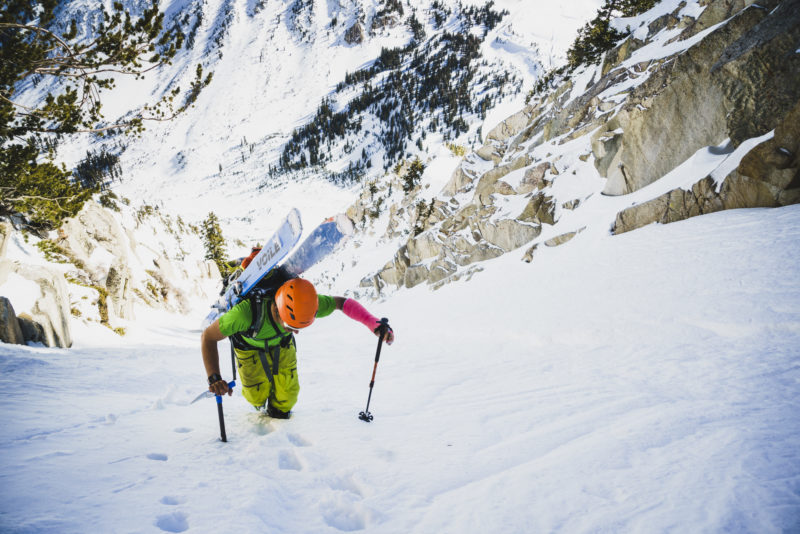
On his website, Rice tallies his vertical. “Five winters ago, I skied about 75,000 vertical feet. The next year I skied 117,000 feet. The next year 248,000. The next year 447,000, and last year 703,000 feet of vert. This year, my goal is to earn 2.5 million self-propelled vertical feet, starting in January 1, 2016,” he wrote in late 2015. “I’d heard about Greg Hill’s record of skiing 2 million vertical feet, human-powered, in a year and I figured I could break that,” says Rice. (When Rice says “skied” he counts just the uphill vertical.)
To put that in perspective, the vertical rise of Superstar, the trail at Killington where the women’s World Cup slalom races have been held is 1,171 feet. To reach two million vert, you’d have to skin up that more than four times a day, every day for 365 days. And Rice wasn’t planning on skinning up groomed trails.
“The whole point of this was to travel and to ski some really cool places,” he says. That meant breaking trail, plotting routes, carrying water and food, avy gear and ropes. It meant figuring out how to survive without a steady job, where to chase snow in the off-season, lining up ski buddies and friends with couches he could crash on.
“At first, I’m not sure if many people actually believed he could or would do it,” says pro skier and mountaineer Caroline Gleich who has, by her own estimate, skied more than 20 times with Rice. I reached her in November, after she had just returned from summiting 26,906-foot Cho Oyu, the sixth highest mountain in the world, and was already planning an expedition to Everest for the spring.
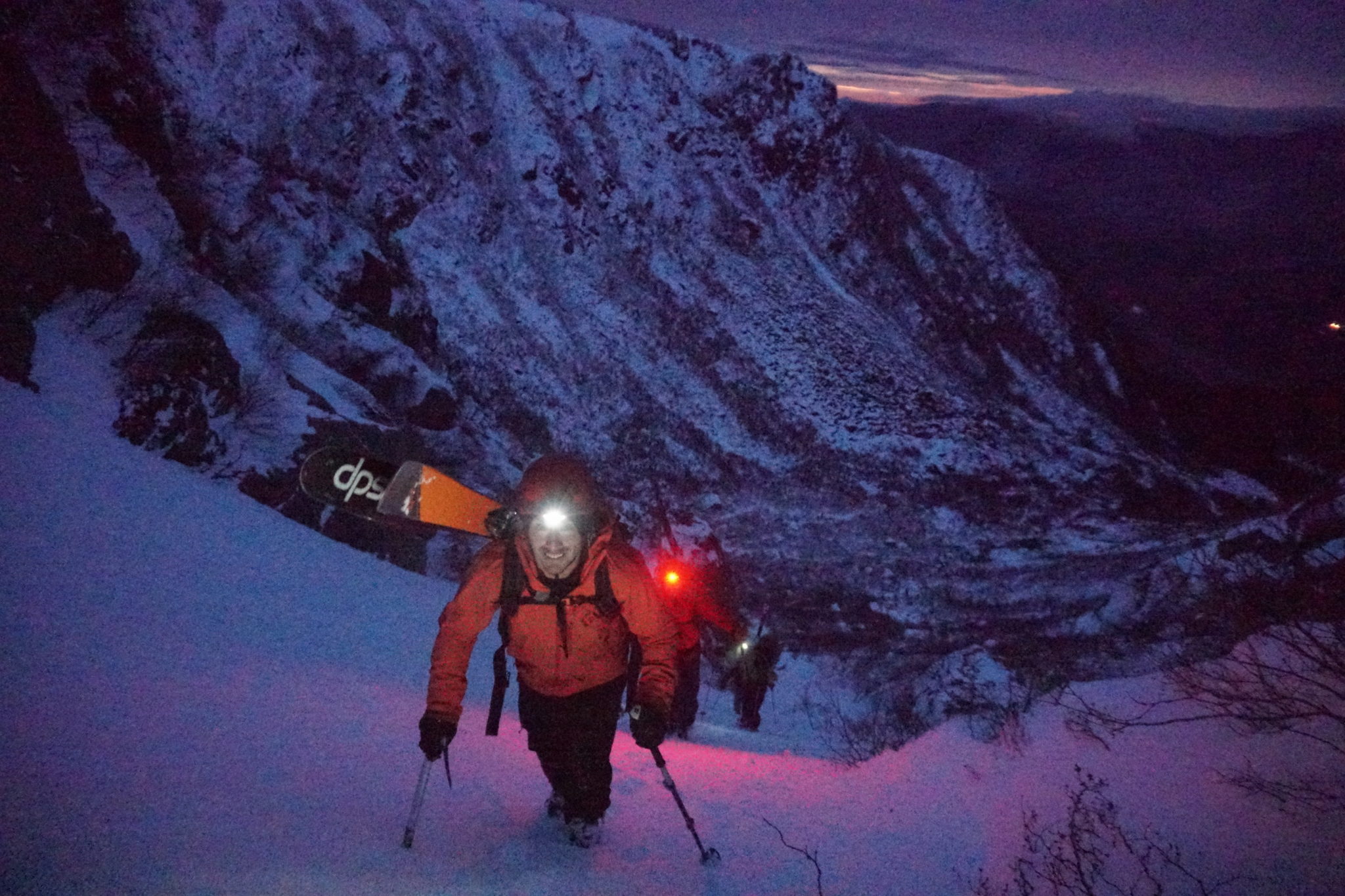
“When he started out to break the record, Aaron was a good skier, but he wasn’t known. He hadn’t really done anything to build up cred and companies were not about to sponsor an unknown,” she recalls. As Rice started in on his assault, logging 10,000 feet a day in January, that began to change. He reached out to Wilkinson-Ray who jumped at the idea of making a film about the effort. He plotted trips to Argentina and Chile for the summer. He documented his skiing on his blog, Instagram and on Backcountry Magazine’s website.
IT’S NOT ABOUT THE RECORD
The story of Rice’s year is told beautifully in the 20-minute film Wilkinson-Ray made, 2.5 Million (watch it at Vtskiandride.com). It shows Rice skiing epic lines and skinning endless terrain. It shows days skiing waist-deep pow out of Refugio Frey, a hut high above treeline near Bariloche, Argentina. And it also shows, honestly, the pain that Rice went through as his body broke down from overtraining.
“Why do it, why did you want to set a record,” Wilkinson Ray asks Rice at the end of the film. “It was never really about the record,” Rice says. “It was about pushing myself as far as I could.”
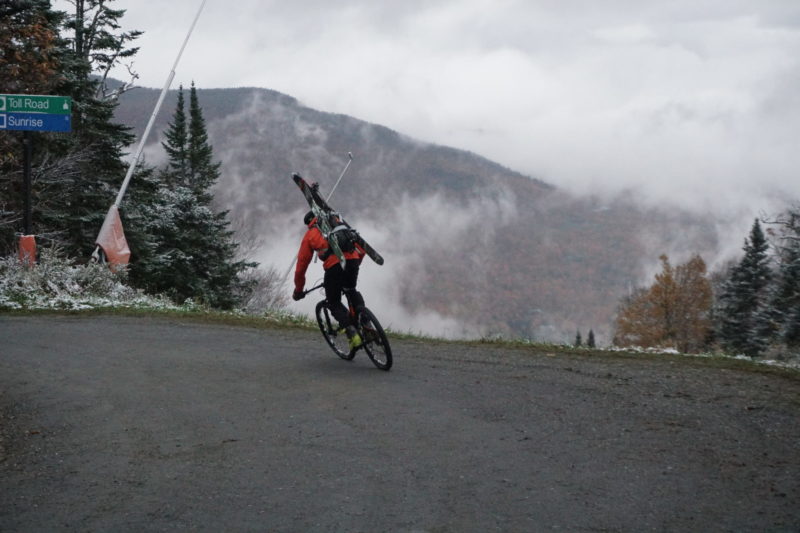
Rice claims he’s not much of an athlete, but he’s skied with the likes of Gleich and her fiancee, Rob Lea, a triathlete and mountaineer. “Aaron is just this great guy to ski with,” Gleich says. “He’s humble, he’s really safe and knowledgeable about the mountains. He never gets phased, he’s just steady.” Gleich is the only woman to have skied all 90 of the Wasatch’s most difficult lines, as documented in Andrew McLean’s The Chuting Gallery.
Rice was with Gleich when she skied one of the Wasatch’s toughest lines, Medusa on Mt. Olympus. “We both climbed this super steep couloir. I chickened out and went to ski Zeus, a line that was still pretty scary and she just pointed them straight down Medusa,” Rice recalls.
Though he could have gone the pro skier route, Rice didn’t. “He actually turned sponsors away and told them to support the next kid who wants to do something,” Gleich says. Instead, in 2017 Rice returned to Vermont and got a job as a staff scientist at Stone Environmental in Montpelier. “If I stayed too long in a place like Alta the sad reality was I only saw two paths for myself, becoming an alcoholic or a washed up ski bum,” he says wryly. “I had other things I wanted to do. And I really love the people here in Vermont and the sense of community.”
As our conversation ends, Rice’s eyes scan the Green Mountains. It is October 12 and snow is in the forecast. “I’ll be up there tomorrow on Mt. Mansfield, even if it’s skiing frost on grass,” he says. The next day, he rides his bike up the Toll Road, skis on his pack. Two weeks later, he joins a group that gets an alpine start, climbing Mt. Washington in the pre-dawn hours by headlamp. They are rewarded with turns down the headwall at first light.
Aaron Rice is back.
For more on Aaron Rice, catch Alex Kaufman’s interview with him on the Wintry Mix podcast.

